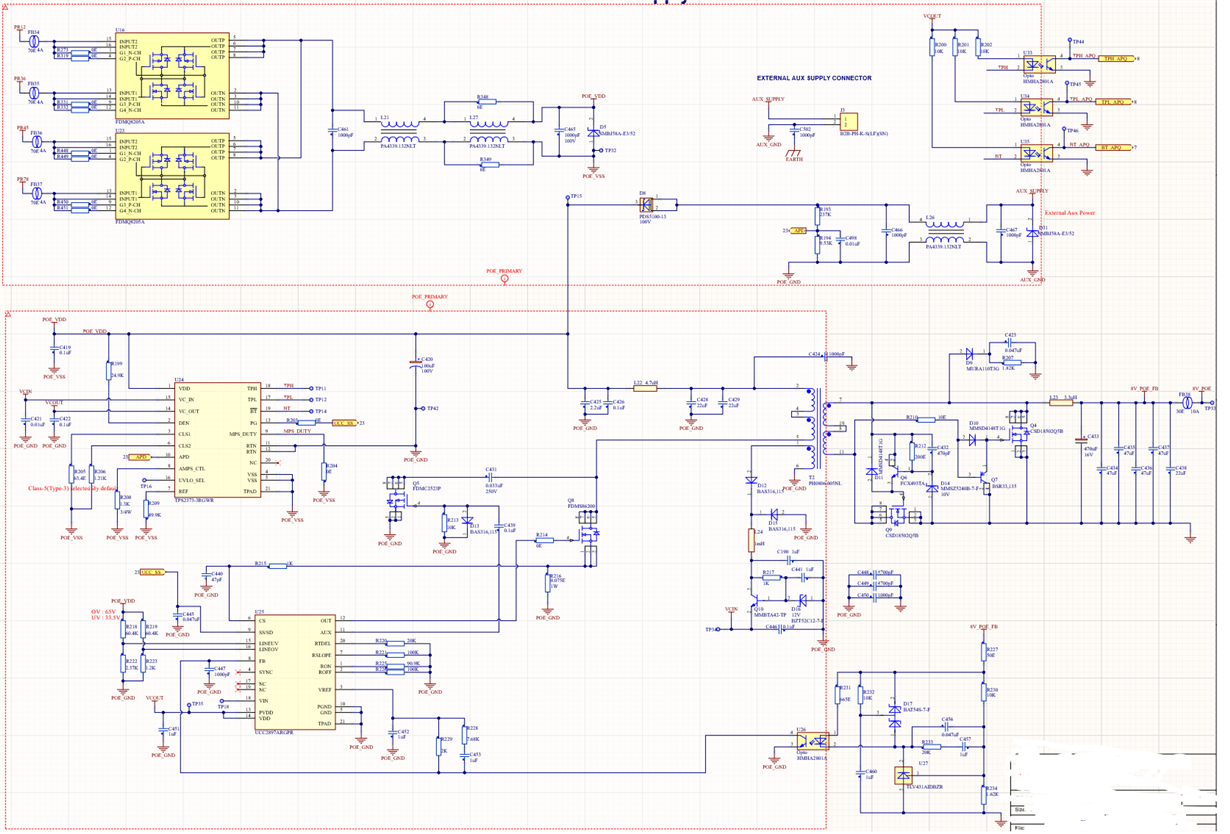Dear TI support,
We do have 2 questions related to the TPS2373.
Our application uses the schematic shown below.
1. We found out that the output voltage of the converter is dependant and not stable when you change the AUX input voltage. For example, 54V input generates 8.4V output and 48V input generates 7.8V output. Is this something expected or if not What we need to cure it
2. We found out that when we use AUX power supply, the conducted emission common-mode noise becomes very high (above the CISPR32 limits, starting from ~200kHz. Please see the attached noise report). We are forced to use special common mode chokes in order to suppress the conducted noise. When we operate with PoE the noise becomes very low (almost zero). Dear support please take a look at the schematic and let us know if we can do something to cure the conducted disturbance.
We stay at your disposal if further details are required.
BR
Andrey Marinov



